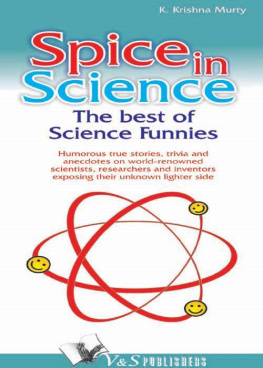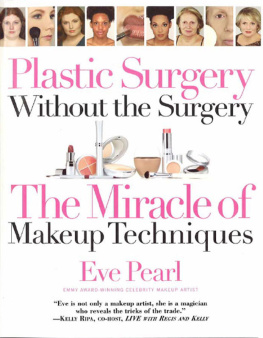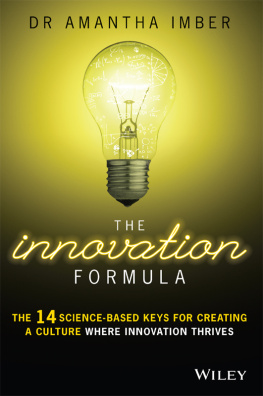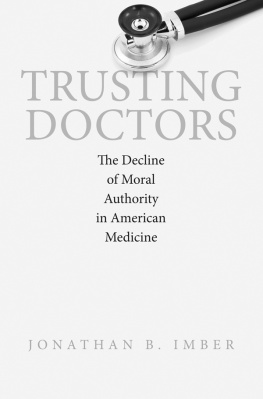ABSOLUTE
BEAUTY
A Renowned
Plastic Surgeons Guide
to Looking Young Forever
Gerald Imber, M.D.

R.W.I.
Contents
T he purpose of this book is to help you look your absolute best throughout adult life. Whatever your age, if you care about the way you look you must have this information. Physical perfection is an unrealistic and unreasonable pursuit that defies definition, frustrates the seeker, and wastes the valuable time of living. Looking great, and feeling great about it, is another thing altogether. It is uplifting, empowering, and makes the business of life far more enjoyable. True beauty maximizes ones natural resources, bends other attributes to fit ones needs, and is as individual as life itself. Literal interpretation aside, correcting imperfections should not imply the pursuit of perfection, but rather removing the obstacles to ones good looks that are preventing true beauty from revealing itself. Nowhere is this more obvious than in the struggle against the unpleasant signs of aging. Absolute beauty is your beauty, unmarred by aging, and helping you to look your very best.
This book will provide all the tools you need to look youthful and beautiful throughout your adult life. It will tell you how to slow down the damage of time, and help you turn back the clock. It will tell you how to protect your youthful good looks, avoid accelerating the changes that lead to aging, and undo the visible changes already present.
Twenty-five or sixty-five, we all want to look our vital, youthful best. The sad truth is that no matter how we wish it werent so, each day brings tiny, frustrating changes, constantly chipping away at youth and beauty. Happily, with proper guidance most of this can be controlled and reversed. It is a lifelong journey, but a simple and sensible one that will yield great rewards for all ages. The most promising future is for those young enough to control the process before it has taken its toll. Those who think they need this book the least will benefit the most, for it is always easier to prevent a wrinkle than erase one. At the other end of the spectrum are those who have stood by as the mirror delivered the bad news. Frustrated and surprised that the years have taken their toll, they will happily find it is possible to revert to their upbeat appearance of ten or fifteen years ago, undo years of wear and tear, and look the way they remember themselves. Wherever
you find yourself along the spectrum of aging, the tools are here, as never before, to make the difference. You need to be willing to help yourself to make it happen. There is no magic, no potion, no wand, no incantation, just common sense, science, and commitment.
The publication of The Youth Corridor, in 1997, introduced what was very likely the first integrated strategy to control the signs of aging. Effective new products and less invasive operative techniques had become available over the preceding decade, but the landscape had not changed appreciably. Until then we had been striking back at a few of the annoying manifestations of aging but, as a rule, still waiting to be wrinkled and sagging before taking action. The Youth Corridor changed all that. It introduced the ideas of prevention, maintenance, and small, less invasive procedures done earlier. The revolutionary idea was to look your best throughout your adult years. A plan for care, self-help, and intervention was offered, and people responded. It made sense, and the book became something of a bible to many women. Men got wind of the idea, and for the first time they began to dabble in the opportunity to influence the way they aged. Why sit idly by spending the best years of ones life waiting to look bad enough to warrant a face-lift? Why not be proactive? Stop making things worse, change what you can change yourself, and get help doing the little things that keep you looking your best throughout the adult years. Thats what it was all about.
While we still cant control the biochemical events, we do understand a great deal about the aging of cells, and can even alter the essential process in some special situations. Generally, however, there is still no quick fix to halt and reverse aging at the cellular level, though that, too, appears closer to reality than ever before. We will discuss the promise of this new science later in the book, but the future is still the future. For today, we need to do the best we can with the tools at hand. We now have the knowledge, skills, and technical ability to effectively manipulate and control the visible signs of aging as never before, even as we close in on the very essence of the process itself.
As a plastic surgeon with an active Manhattan practice, I have spent much of my professional life consumed by the subject of facial aging. Now, more than ever, I am convinced that we have the tools at hand to keep the manifestations of facial aging at bay throughout adult life. Can a sixty-year-old-woman look as she did at twenty-five? No, but she can certainly be better-looking than she ever imagined, surely the most attractive adult that her natural resources will allow, better and more youthful than one could wish for a decade ago. Can a twenty-five-year-old keep looking twenty-five for the next decade or two? Possibly. Can we all look younger and better than our years? Definitely. We have the where with all to keep skin clear, wrinkle-free, and without pouches or sagging throughout adult life. And now, more than ever before, these tools are available to virtually everyone.
When I first introduced my plan I suggested preventing changes of aging whenever possible and dealing proactively with those that could not be prevented early, always in as minimally invasive a manner as possible. Generally, I was looked upon as something of a dreamer. But times have changed, and everyone is on the bandwagon. Self-help and early, minimal intervention are all the rage, and the concept is being reinvented every day. It amuses me to read pieces in fashion magazines by young reporters interviewing plastic surgeons about revolutionary philosophies and procedures, most of which were developed in our clinic. The general acceptance is a happy affirmation that what I truly believed, introduced, and encouraged has been integrated into the lives of so many.
Today we have reached the next plateau, with more specific programs and better tools to do the job. Products available both over the counter and by prescription are more effective than even a decade ago. We are increasingly able to forestall the need for surgery, and the actual surgical procedures have become less invasive. The most obvious lesson is that we can best impede aging for those lucky enough to begin caring for themselves before significant changes occur. For the majority, we will reset the clock to a new starting point, minimize further aging, and help control the future.
A lot has changed since you may have visited these pages eight years ago. But, now more than ever, I continue to insist that it is better to prevent wrinkles than try to cure them, that small procedures done early will preserve and protect your youthful appearance, and that we are increasingly able to help you achieve absolute beauty.
I was always happy with myself. I looked great. I never thought about changing anything. Sure, there were some signs of aging, but it wasnt terrible. Then one morning I looked in the mirror, and saw my mother. That was it. I love my mother, but I dont want to look like her. Shes a much older woman... you know, a different generation, with different priorities...







